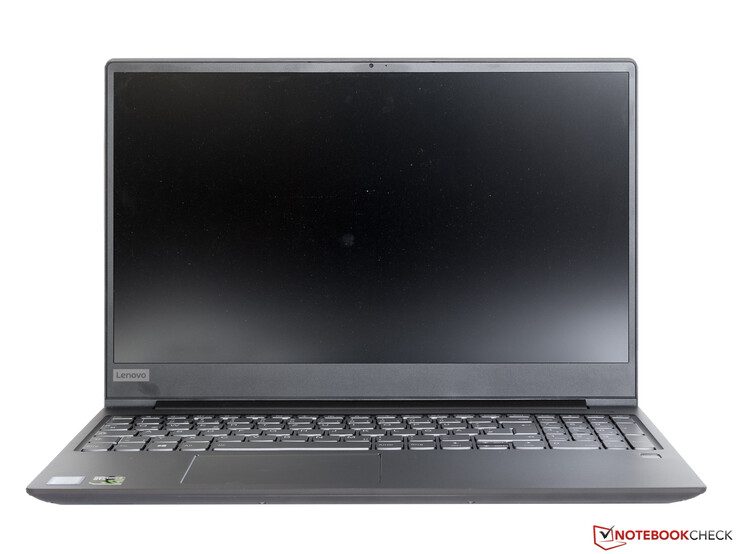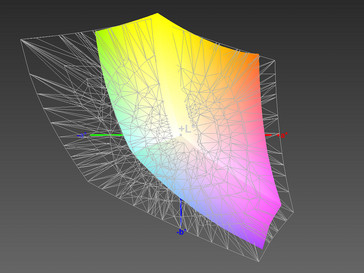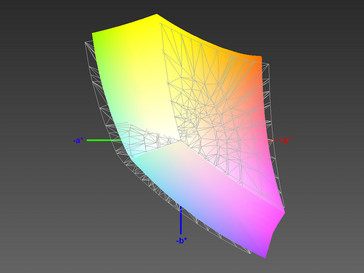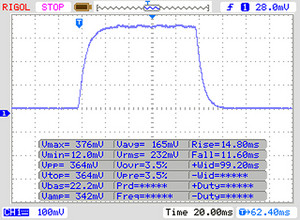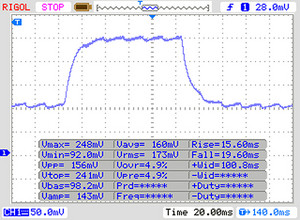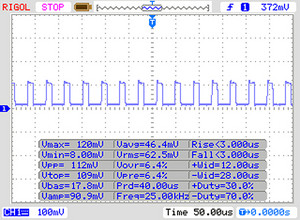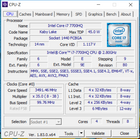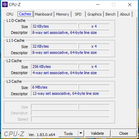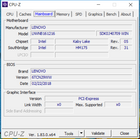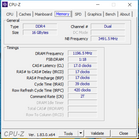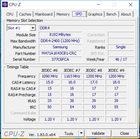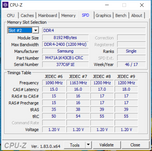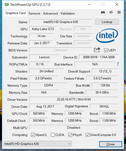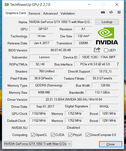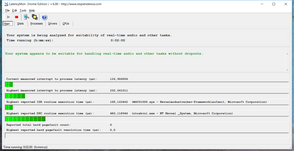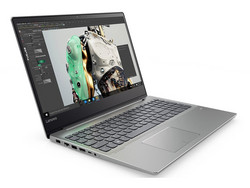Breve Análise do Lenovo Ideapad 720S-15IKB (i7-7700HQ, GTX 1050 Ti Max-Q, SSD 512 GB)
Os Top 10
» Os Top 10 Portáteis Multimídia
» Os Top 10 Portáteis de Jogos
» Os Top 10 Portáteis Leves para Jogos
» Os Top 10 Portáteis Acessíveis de Escritório/Empresariais
» Os Top 10 Portáteis Premium de Escritório/Empresariais
» Os Top 10 dos Portáteis Workstation
» Os Top 10 Subportáteis
» Os Top 10 Ultrabooks
» Os Top 10 Conversíveis
» Os Top 10 Tablets
» Os Top 10 Smartphones
» A melhores Telas de Portáteis Analisadas Pela Notebookcheck
» Top 10 dos portáteis abaixo dos 500 Euros da Notebookcheck
» Top 10 dos Portáteis abaixo dos 300 Euros
Size Comparison
| SD Card Reader | |
| average JPG Copy Test (av. of 3 runs) | |
| HP Spectre x360 15t-bl100 (Toshiba Exceria Pro SDXC 64 GB UHS-II) | |
| Dell XPS 15 2018 i5 FHD 97Wh | |
| Média da turma Multimedia (21.1 - 198, n=41, últimos 2 anos) | |
| Lenovo Ideapad 720S-15IKB 81AC001AGE (Toshiba Exceria Pro M501) | |
| Asus Zenbook Pro UX550VE-DB71T (Toshiba Exceria Pro SDXC 64 GB UHS-II) | |
| maximum AS SSD Seq Read Test (1GB) | |
| HP Spectre x360 15t-bl100 (Toshiba Exceria Pro SDXC 64 GB UHS-II) | |
| Dell XPS 15 2018 i5 FHD 97Wh | |
| Média da turma Multimedia (27.4 - 262, n=41, últimos 2 anos) | |
| Asus Zenbook Pro UX550VE-DB71T (Toshiba Exceria Pro SDXC 64 GB UHS-II) | |
| Lenovo Ideapad 720S-15IKB 81AC001AGE (Toshiba Exceria Pro M501) | |
| |||||||||||||||||||||||||
iluminação: 83 %
iluminação com acumulador: 332 cd/m²
Contraste: 1145:1 (Preto: 0.29 cd/m²)
ΔE ColorChecker Calman: 3.73 | ∀{0.5-29.43 Ø4.78}
calibrated: 2
ΔE Greyscale Calman: 3.96 | ∀{0.09-98 Ø5}
89% sRGB (Argyll 1.6.3 3D)
58% AdobeRGB 1998 (Argyll 1.6.3 3D)
64.3% AdobeRGB 1998 (Argyll 3D)
89.4% sRGB (Argyll 3D)
63.6% Display P3 (Argyll 3D)
Gamma: 2.4
CCT: 6921 K
| Lenovo Ideapad 720S-15IKB 81AC001AGE Chi Mei CMN15E8 / N156HCE-EN1 CMN, , 1920x1080, 15.6" | Dell XPS 15 2018 i5 FHD 97Wh Sharp SHP149A LQ156M1, , 1920x1080, 15.6" | HP Spectre x360 15t-bl100 BOE06C3, , 3840x2160, 15.6" | Asus Zenbook Pro UX550VE-DB71T N156HCE-EN1 (CMN15E8), , 1920x1080, 15.6" | |
|---|---|---|---|---|
| Display | 5% | 0% | 1% | |
| Display P3 Coverage (%) | 63.6 | 66 4% | 66.6 5% | 64.3 1% |
| sRGB Coverage (%) | 89.4 | 96.5 8% | 86.9 -3% | 90.4 1% |
| AdobeRGB 1998 Coverage (%) | 64.3 | 66.7 4% | 63.5 -1% | 65.3 2% |
| Response Times | -32% | -20% | -29% | |
| Response Time Grey 50% / Grey 80% * (ms) | 34 ? | 49 ? -44% | 41.2 ? -21% | 43.2 ? -27% |
| Response Time Black / White * (ms) | 25 ? | 30 ? -20% | 29.6 ? -18% | 32.8 ? -31% |
| PWM Frequency (Hz) | 25000 ? | 961 ? | 1000 | 25510 ? |
| Screen | 16% | -7% | -27% | |
| Brightness middle (cd/m²) | 332 | 413 24% | 338.7 2% | 288.2 -13% |
| Brightness (cd/m²) | 301 | 378 26% | 325 8% | 266 -12% |
| Brightness Distribution (%) | 83 | 86 4% | 91 10% | 75 -10% |
| Black Level * (cd/m²) | 0.29 | 0.29 -0% | 0.28 3% | 0.3 -3% |
| Contrast (:1) | 1145 | 1424 24% | 1210 6% | 961 -16% |
| Colorchecker dE 2000 * | 3.73 | 2.44 35% | 4.9 -31% | 5.5 -47% |
| Colorchecker dE 2000 max. * | 6.6 | 4.46 32% | 8.7 -32% | 11.3 -71% |
| Colorchecker dE 2000 calibrated * | 2 | 2.48 -24% | ||
| Greyscale dE 2000 * | 3.96 | 2.48 37% | 5.5 -39% | 7.9 -99% |
| Gamma | 2.4 92% | 2.43 91% | 2.08 106% | 2.09 105% |
| CCT | 6921 94% | 7006 93% | 7498 87% | 6559 99% |
| Color Space (Percent of AdobeRGB 1998) (%) | 58 | 62 7% | 63.5 9% | 58.5 1% |
| Color Space (Percent of sRGB) (%) | 89 | 96 8% | 86.92 -2% | 90 1% |
| Média Total (Programa/Configurações) | -4% /
8% | -9% /
-7% | -18% /
-22% |
* ... menor é melhor
Exibir tempos de resposta
| ↔ Tempo de resposta preto para branco | ||
|---|---|---|
| 25 ms ... ascensão ↗ e queda ↘ combinadas | ↗ 14 ms ascensão | |
| ↘ 11 ms queda | ||
| A tela mostra taxas de resposta relativamente lentas em nossos testes e pode ser muito lenta para os jogadores. Em comparação, todos os dispositivos testados variam de 0.1 (mínimo) a 240 (máximo) ms. » 58 % de todos os dispositivos são melhores. Isso significa que o tempo de resposta medido é pior que a média de todos os dispositivos testados (20.2 ms). | ||
| ↔ Tempo de resposta 50% cinza a 80% cinza | ||
| 34 ms ... ascensão ↗ e queda ↘ combinadas | ↗ 15 ms ascensão | |
| ↘ 19 ms queda | ||
| A tela mostra taxas de resposta lentas em nossos testes e será insatisfatória para os jogadores. Em comparação, todos os dispositivos testados variam de 0.165 (mínimo) a 636 (máximo) ms. » 45 % de todos os dispositivos são melhores. Isso significa que o tempo de resposta medido é semelhante à média de todos os dispositivos testados (31.6 ms). | ||
Cintilação da tela / PWM (modulação por largura de pulso)
| Tela tremeluzindo/PWM detectado | 25000 Hz | ≤ 40 % configuração de brilho | |
A luz de fundo da tela pisca em 25000 Hz (pior caso, por exemplo, utilizando PWM) Cintilação detectada em uma configuração de brilho de 40 % e abaixo. Não deve haver cintilação ou PWM acima desta configuração de brilho. A frequência de 25000 Hz é bastante alta, então a maioria dos usuários sensíveis ao PWM não deve notar nenhuma oscilação. [pwm_comparison] Em comparação: 53 % de todos os dispositivos testados não usam PWM para escurecer a tela. Se PWM foi detectado, uma média de 8111 (mínimo: 5 - máximo: 343500) Hz foi medida. | |||
| PCMark 8 Home Score Accelerated v2 | 4118 pontos | |
| PCMark 8 Work Score Accelerated v2 | 5058 pontos | |
| PCMark 10 Score | 4276 pontos | |
Ajuda | ||
| Lenovo Ideapad 720S-15IKB 81AC001AGE Samsung SSD PM981 MZVLB512HAJQ | Dell XPS 15 2018 i5 FHD 97Wh Lite-On CA3-8D256-Q11 | HP Spectre x360 15t-bl100 Samsung PM961 NVMe MZVLW512HMJP | Asus Zenbook Pro UX550VE-DB71T Samsung PM961 NVMe MZVLW512HMJP | Média Samsung SSD PM981 MZVLB512HAJQ | |
|---|---|---|---|---|---|
| CrystalDiskMark 3.0 | -35% | 12% | 4% | ||
| Read Seq (MB/s) | 2381 | 1706 -28% | 1248 -48% | 2002 ? -16% | |
| Write Seq (MB/s) | 2100 | 613 -71% | 1476 -30% | 1656 ? -21% | |
| Read 512 (MB/s) | 1840 | 1171 -36% | 849 -54% | 1213 ? -34% | |
| Write 512 (MB/s) | 1932 | 483.4 -75% | 1118 -42% | 1641 ? -15% | |
| Read 4k (MB/s) | 55.3 | 40.64 -27% | 58.8 6% | 61.4 ? 11% | |
| Write 4k (MB/s) | 101 | 89.4 -11% | 155.2 54% | 131.3 ? 30% | |
| Read 4k QD32 (MB/s) | 310.7 | 233.8 -25% | 645 108% | 407 ? 31% | |
| Write 4k QD32 (MB/s) | 275.9 | 249.1 -10% | 547 98% | 402 ? 46% | |
| CrystalDiskMark 5.2 / 6 | -32% | -15% | -28% | -17% | |
| Read 4K (MB/s) | 46.78 | 44.64 -5% | 48.07 3% | 46.45 -1% | 44 ? -6% |
| Write 4K (MB/s) | 139.3 | 89.4 -36% | 174.1 25% | 145.6 5% | 126.7 ? -9% |
| Read Seq (MB/s) | 2354 | 1774 -25% | 1008 -57% | 785 -67% | 1716 ? -27% |
| Write Seq (MB/s) | 2125 | 830 -61% | 1444 -32% | 1114 -48% | 1617 ? -24% |
| Média Total (Programa/Configurações) | -34% /
-34% | -2% /
3% | -28% /
-28% | -7% /
-3% |
| 3DMark 06 Standard Score | 26796 pontos | |
| 3DMark Vantage P Result | 24827 pontos | |
| 3DMark 11 Performance | 8250 pontos | |
| 3DMark Ice Storm Standard Score | 78235 pontos | |
| 3DMark Cloud Gate Standard Score | 20755 pontos | |
| 3DMark Fire Strike Score | 6175 pontos | |
Ajuda | ||
| Rise of the Tomb Raider | |
| 1366x768 Medium Preset AF:2x | |
| Média NVIDIA GeForce GTX 1050 Ti Max-Q (67.6 - 85.7, n=4) | |
| Dell XPS 15 2018 i5 FHD 97Wh | |
| Lenovo Ideapad 720S-15IKB 81AC001AGE | |
| HP Spectre x360 15t-bl100 | |
| 1920x1080 High Preset AA:FX AF:4x | |
| Média NVIDIA GeForce GTX 1050 Ti Max-Q (38.8 - 47.7, n=4) | |
| Dell XPS 15 2018 i5 FHD 97Wh | |
| Lenovo Ideapad 720S-15IKB 81AC001AGE | |
| HP Spectre x360 15t-bl100 | |
| Farming Simulator 17 | |
| 1920x1080 High Preset AA:2xMS AF:2x | |
| Lenovo Ideapad 720S-15IKB 81AC001AGE | |
| Média NVIDIA GeForce GTX 1050 Ti Max-Q (n=1) | |
| 1920x1080 Very High Preset AA:4xMS AF:4x | |
| Lenovo Ideapad 720S-15IKB 81AC001AGE | |
| Média NVIDIA GeForce GTX 1050 Ti Max-Q (n=1) | |
| Ghost Recon Wildlands | |
| 1920x1080 High Preset AA:T AF:4x | |
| Média NVIDIA GeForce GTX 1050 Ti Max-Q (35.3 - 41.9, n=3) | |
| Lenovo Ideapad 720S-15IKB 81AC001AGE | |
| 1920x1080 Ultra Preset AA:T AF:16x | |
| Média NVIDIA GeForce GTX 1050 Ti Max-Q (19.1 - 23.4, n=3) | |
| Lenovo Ideapad 720S-15IKB 81AC001AGE | |
| baixo | média | alto | ultra | |
|---|---|---|---|---|
| Rise of the Tomb Raider (2016) | 118.3 | 67.6 | 38.8 | 31.7 |
| Farming Simulator 17 (2016) | 137.3 | 104.6 | ||
| Ghost Recon Wildlands (2017) | 39.3 | 35.3 | 19.1 |
Barulho
| Ocioso |
| 30.3 / 30.3 / 30.3 dB |
| Carga |
| 39.3 / 39.6 dB |
 | ||
30 dB silencioso 40 dB(A) audível 50 dB(A) ruidosamente alto |
||
min: | ||
(-) A temperatura máxima no lado superior é 54.5 °C / 130 F, em comparação com a média de 36.9 °C / 98 F , variando de 21.1 a 71 °C para a classe Multimedia.
(-) A parte inferior aquece até um máximo de 59.3 °C / 139 F, em comparação com a média de 39.2 °C / 103 F
(+) Em uso inativo, a temperatura média para o lado superior é 26.4 °C / 80 F, em comparação com a média do dispositivo de 31.3 °C / ### class_avg_f### F.
(+) Os apoios para as mãos e o touchpad são mais frios que a temperatura da pele, com um máximo de 31.8 °C / 89.2 F e, portanto, são frios ao toque.
(-) A temperatura média da área do apoio para as mãos de dispositivos semelhantes foi 28.7 °C / 83.7 F (-3.1 °C / -5.5 F).
| desligado | |
| Ocioso | |
| Carga |
|
Key:
min: | |
| Lenovo Ideapad 720S-15IKB 81AC001AGE i7-7700HQ, GeForce GTX 1050 Ti Max-Q, Samsung SSD PM981 MZVLB512HAJQ, IPS, 1920x1080, 15.6" | Dell XPS 15 2018 i5 FHD 97Wh i5-8300H, GeForce GTX 1050 Mobile, Lite-On CA3-8D256-Q11, LED IGZO IPS InfinityEdge, 1920x1080, 15.6" | HP Spectre x360 15t-bl100 i5-8550U, GeForce MX150, Samsung PM961 NVMe MZVLW512HMJP, IPS, 3840x2160, 15.6" | Asus Zenbook Pro UX550VE-DB71T i7-7700HQ, GeForce GTX 1050 Ti Mobile, Samsung PM961 NVMe MZVLW512HMJP, IPS, 1920x1080, 15.6" | Média NVIDIA GeForce GTX 1050 Ti Max-Q | Média da turma Multimedia | |
|---|---|---|---|---|---|---|
| Power Consumption | 13% | -59% | -13% | -34% | -24% | |
| Idle Minimum * (Watt) | 3.7 | 2.9 22% | 11.6 -214% | 6.3 -70% | 5.8 ? -57% | 5.94 ? -61% |
| Idle Average * (Watt) | 8 | 5.8 27% | 13.8 -73% | 7.9 1% | 11.2 ? -40% | 10.3 ? -29% |
| Idle Maximum * (Watt) | 9.8 | 7.5 23% | 14.2 -45% | 8.1 17% | 13.5 ? -38% | 12.4 ? -27% |
| Load Average * (Watt) | 85 | 77.5 9% | 67.9 20% | 84.9 -0% | 86.9 ? -2% | 68.9 ? 19% |
| Load Maximum * (Watt) | 92.4 | 107 -16% | 76.9 17% | 102.4 -11% | 122.4 ? -32% | 114.2 ? -24% |
| Witcher 3 ultra * (Watt) | 84 | 59 | 96.3 |
* ... menor é melhor
| Lenovo Ideapad 720S-15IKB 81AC001AGE i7-7700HQ, GeForce GTX 1050 Ti Max-Q, 79 Wh | Dell XPS 15 2018 i5 FHD 97Wh i5-8300H, GeForce GTX 1050 Mobile, 97 Wh | HP Spectre x360 15t-bl100 i5-8550U, GeForce MX150, 79.2 Wh | Asus Zenbook Pro UX550VE-DB71T i7-7700HQ, GeForce GTX 1050 Ti Mobile, 73 Wh | Média da turma Multimedia | |
|---|---|---|---|---|---|
| Duração da bateria | 36% | -3% | -21% | 16% | |
| Reader / Idle (h) | 22.6 | 15.6 -31% | 17.1 -24% | 23.7 ? 5% | |
| H.264 (h) | 11.1 | 15.8 ? 42% | |||
| WiFi v1.3 (h) | 9.8 | 15.7 60% | 8.5 -13% | 8.9 -9% | 11.4 ? 16% |
| Load (h) | 1.7 | 1.9 12% | 2.3 35% | 1.2 -29% | 1.688 ? -1% |
| Witcher 3 ultra (h) | 1 |
Pro
Contra
Mesmo depois de algumas semanas na companhia do Lenovo Ideapad 720S-15IKB, ainda achamos sua configuração de hardware um tanto estranha, mesmo que seja totalmente sensata. Um i7-7700HQ reduzido para um TDP de 35 watts tem valor de curiosidade, e considerando os problemas do sistema com a regulação térmica, ficamos imaginando se a Lenovo afogou a CPU por simples necessidade. Apesar dessa estranheza, o poder de desempenho do processador é mais do que suficiente para aplicativos pesados e multitarefa intensiva. A CPU nunca atua como gargalo - a versão Max-Q minimamente afogada da Nvidia GeForce 1050 Ti desempenha esse papel, principalmente na renderização de jogos com alta demanda de hardware.
Para um dispositivo dessa classe, inclusive em comparação direta com outros portáteis que cobrimos nesta análise, a incomum seleção de portas será, sem dúvida, um empecilho para muitos compradores em potencial. Forçar os usuários a carregar adaptadores que precisam ser adquiridos separadamente é uma maneira infalível de perder clientes. Não sabemos explicar a ausência de uma conexão HDMI e/ou DisplayPort separada, já que certamente há muito espaço disponível. As desvantagens muito menos importantes incluem a recepção inferior de WLAN e o bleeding da tela, que só é visível quando o conteúdo da imagem é muito escuro.
Embora o Lenovo Ideapad 720S-15IKB seja um dispositivo atraente na maioria dos outros aspectos, sua regulação térmica problemática e, acima de tudo, sua falta de conexões físicas nos deixam sem vontade de recomendá-lo.
No lado positivo, podemos enumerar: A carcaça discreta, porém sólida e ergonômica, os recursos de segurança atualizados, a boa tela e, não menos importante, o modo de economia de energia do sistema e comportamento silencioso - sem esquecer a ampla autonomia da bateria com muitas reservas para o futuro. Embora consideremos o Lenovo Ideapad um sucesso geral - conforme indicado por nossa classificação de 87%, apenas um pouco abaixo de um "muito bom" - mais do que qualquer coisa, a falta de conexões nos impede de fornecer ao dispositivo nosso selo de recomendação. Por outro lado, se você fizer quase tudo sem fio, de alguma forma se antecipar as portas disponíveis, ou não se incomodar com a ideia de carregar adaptadores extras, então o Ideapad ainda pode ser uma boa escolha para você.
Lenovo Ideapad 720S-15IKB 81AC001AGE
- 08/22/2018 v6 (old)
Sven Kloevekorn




